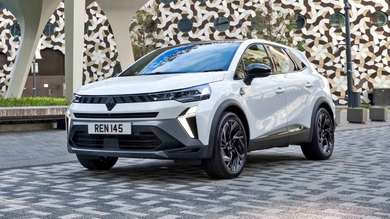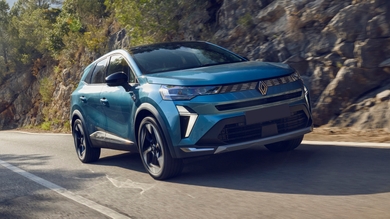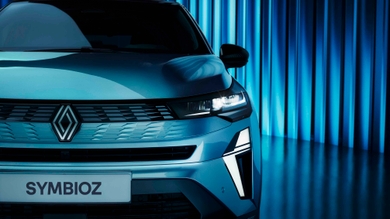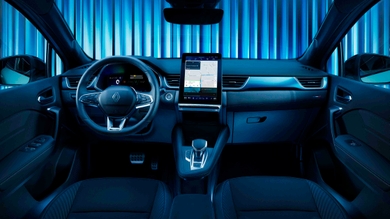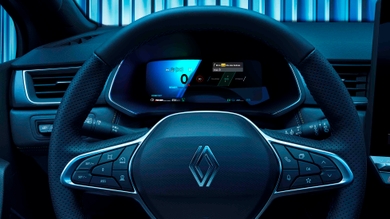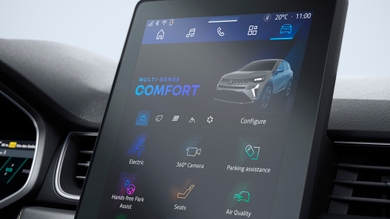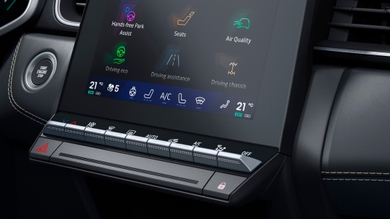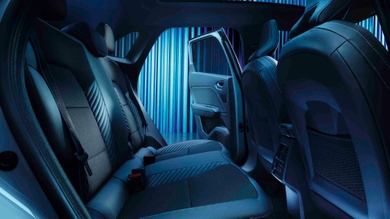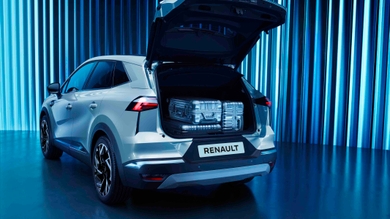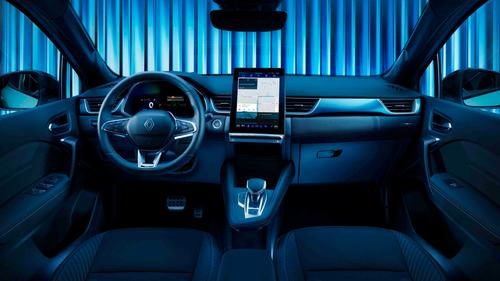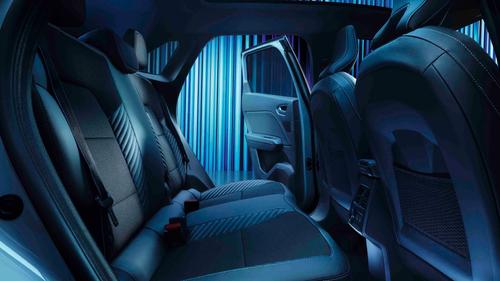

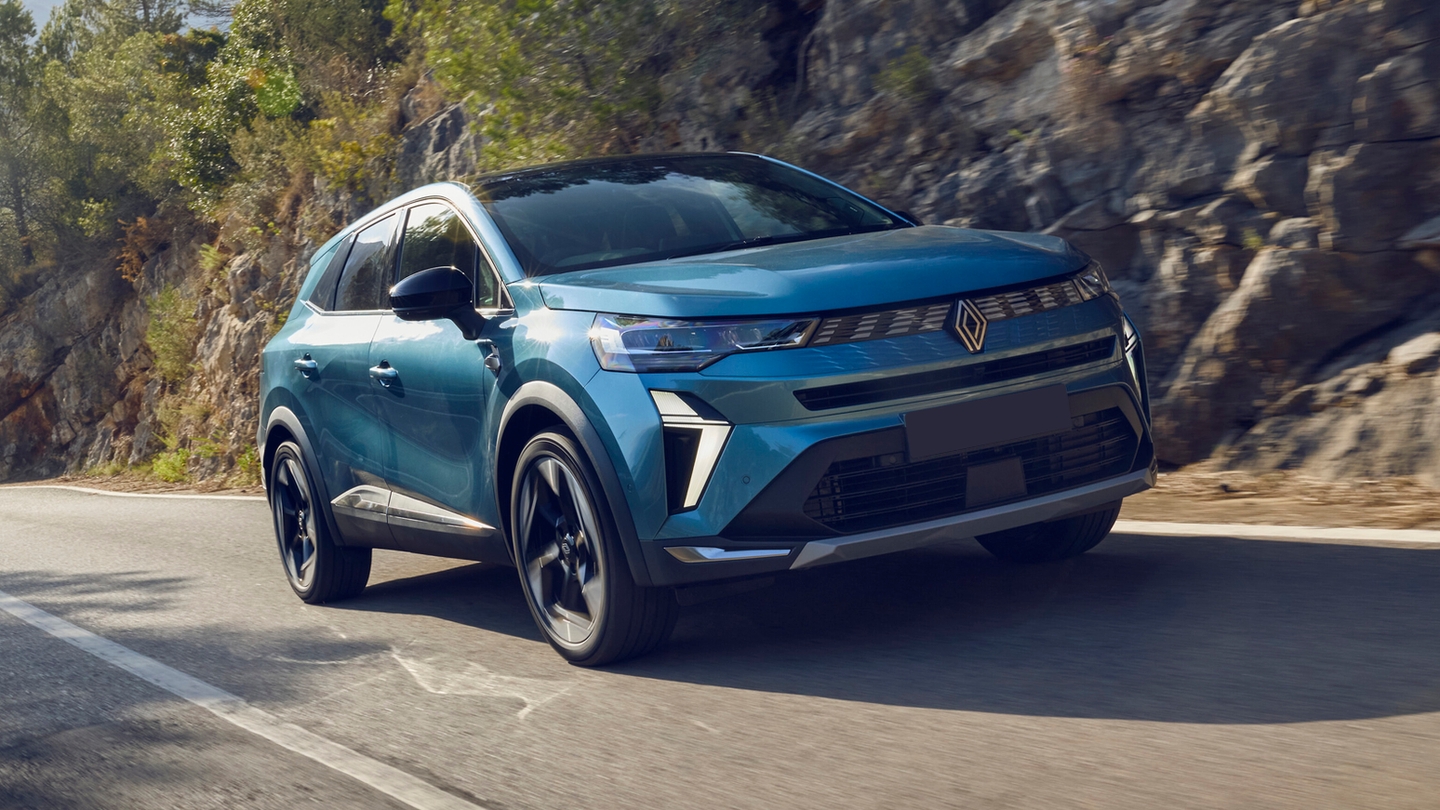


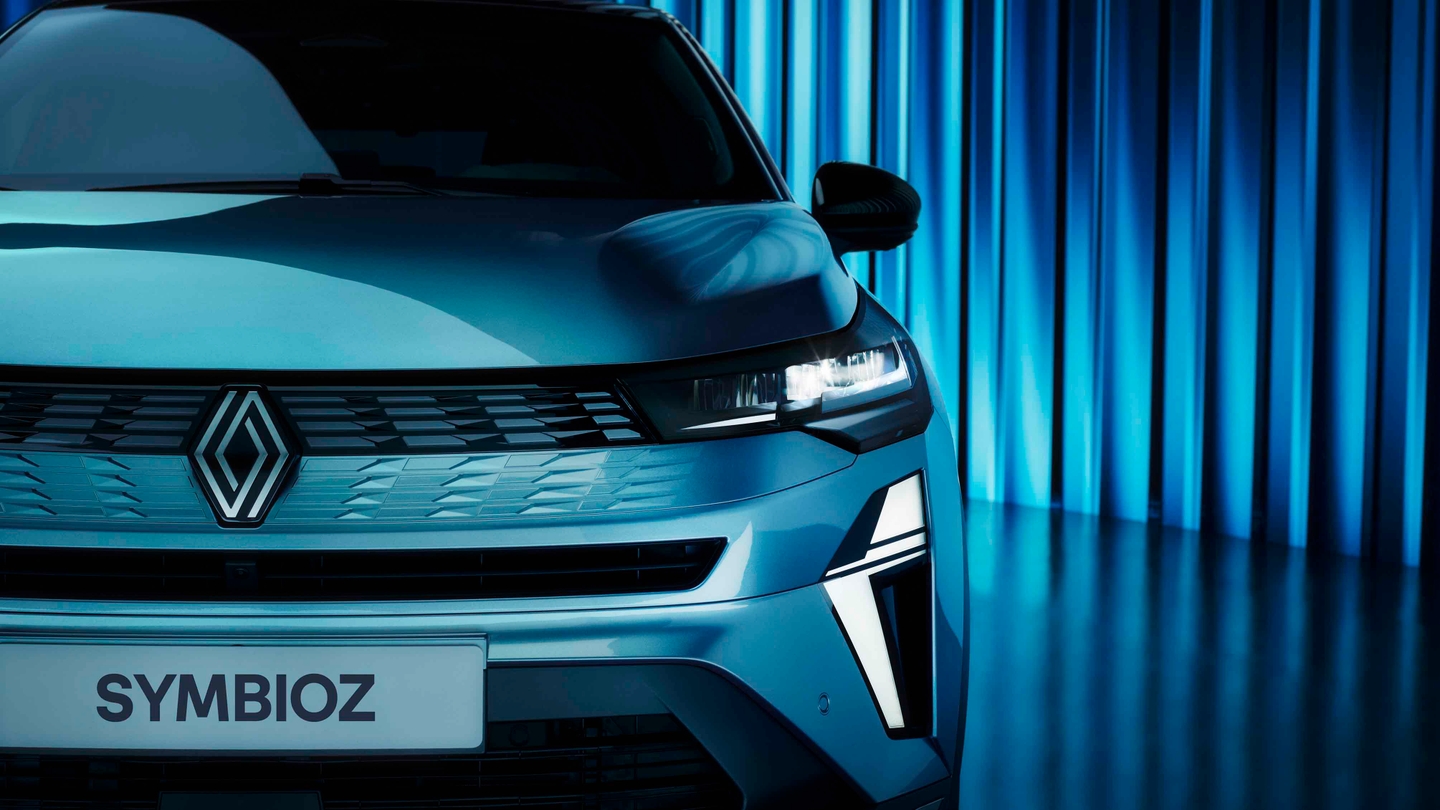
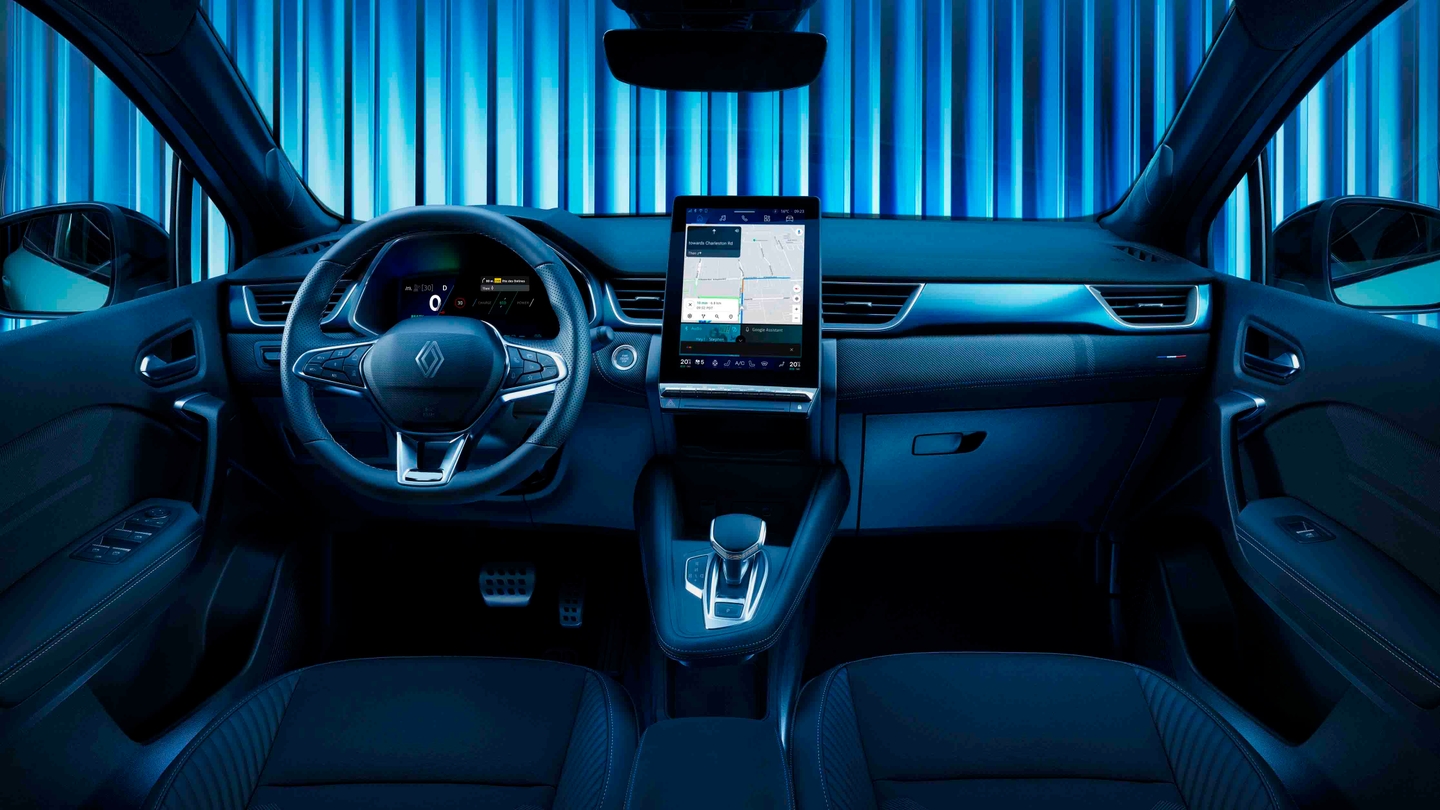
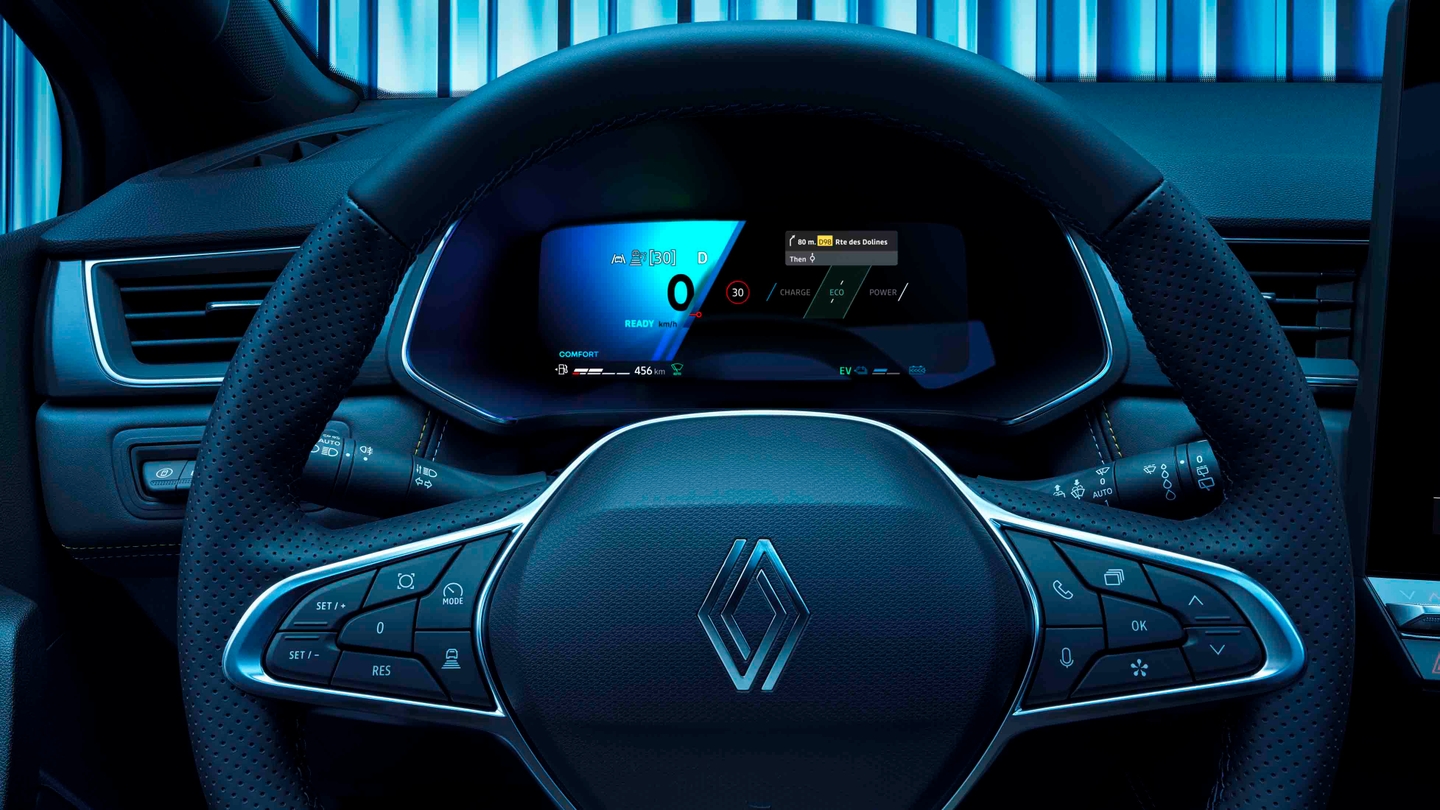
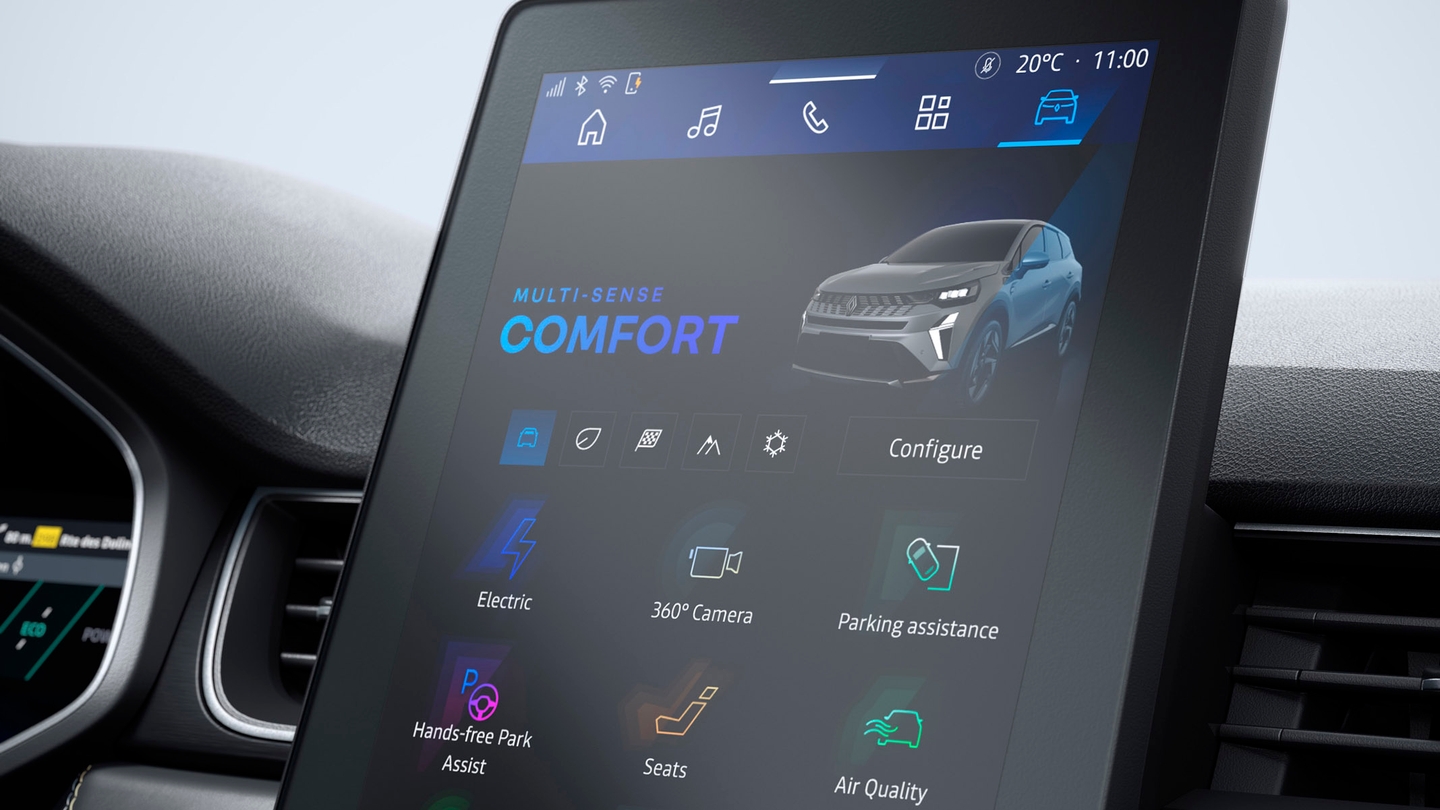
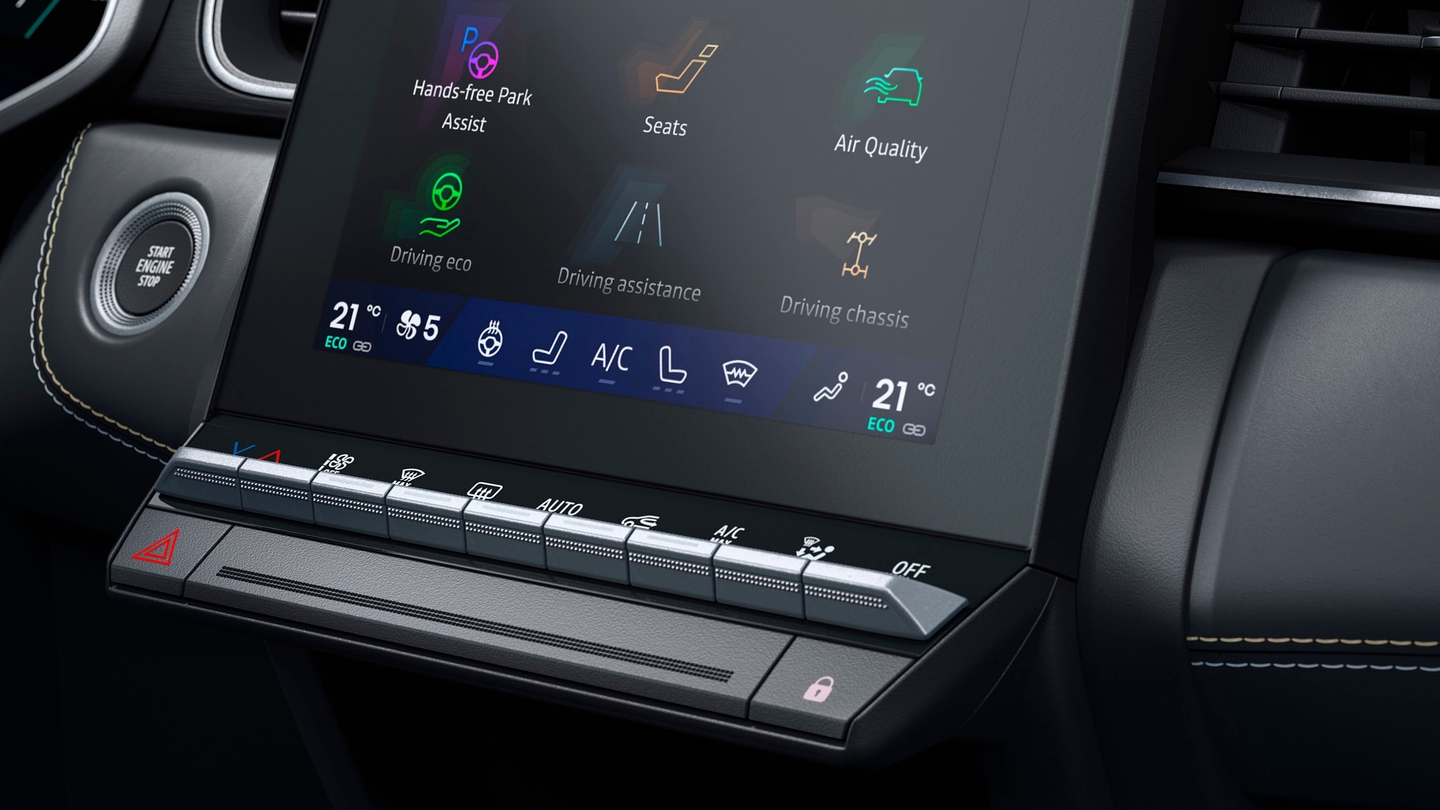
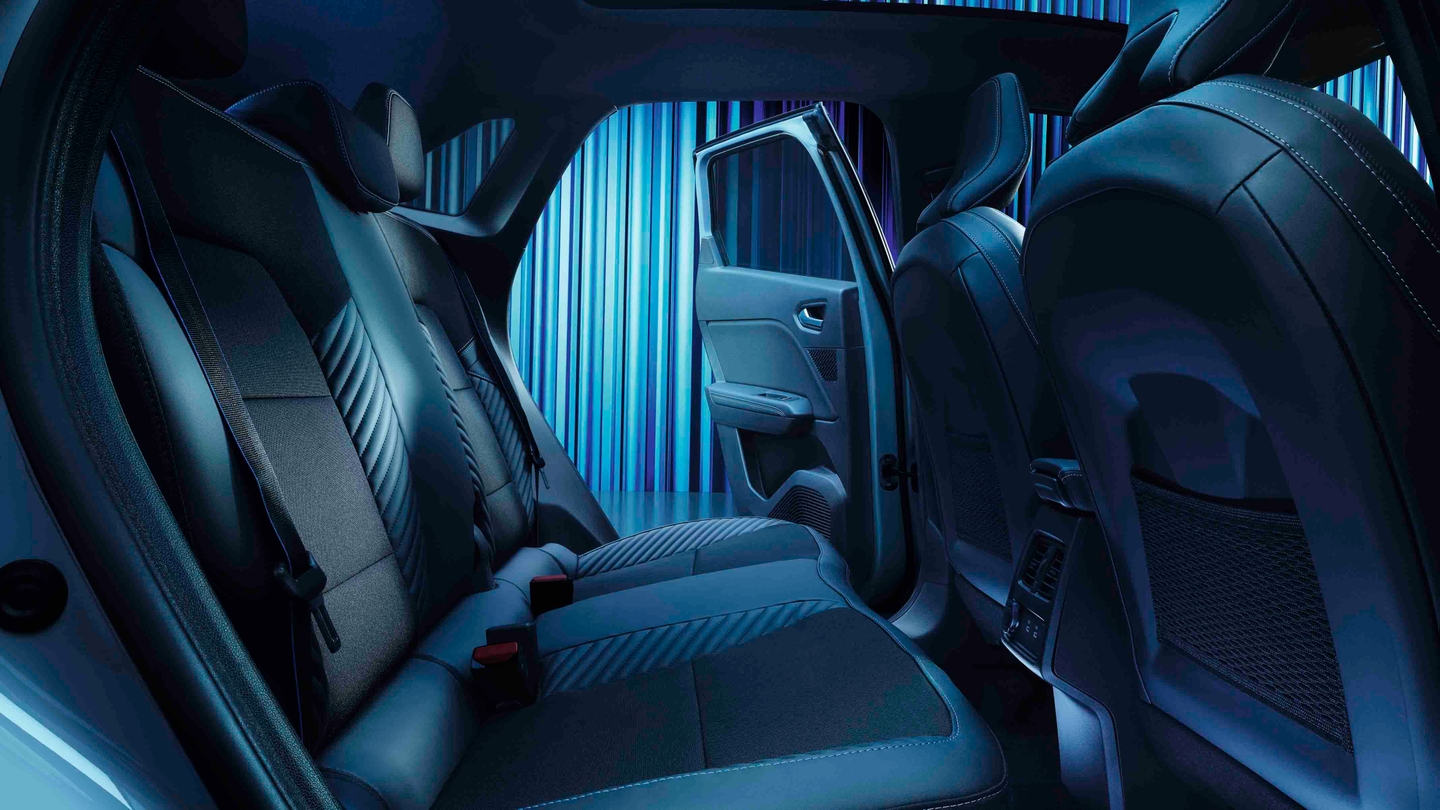

Renault Symbioz Review
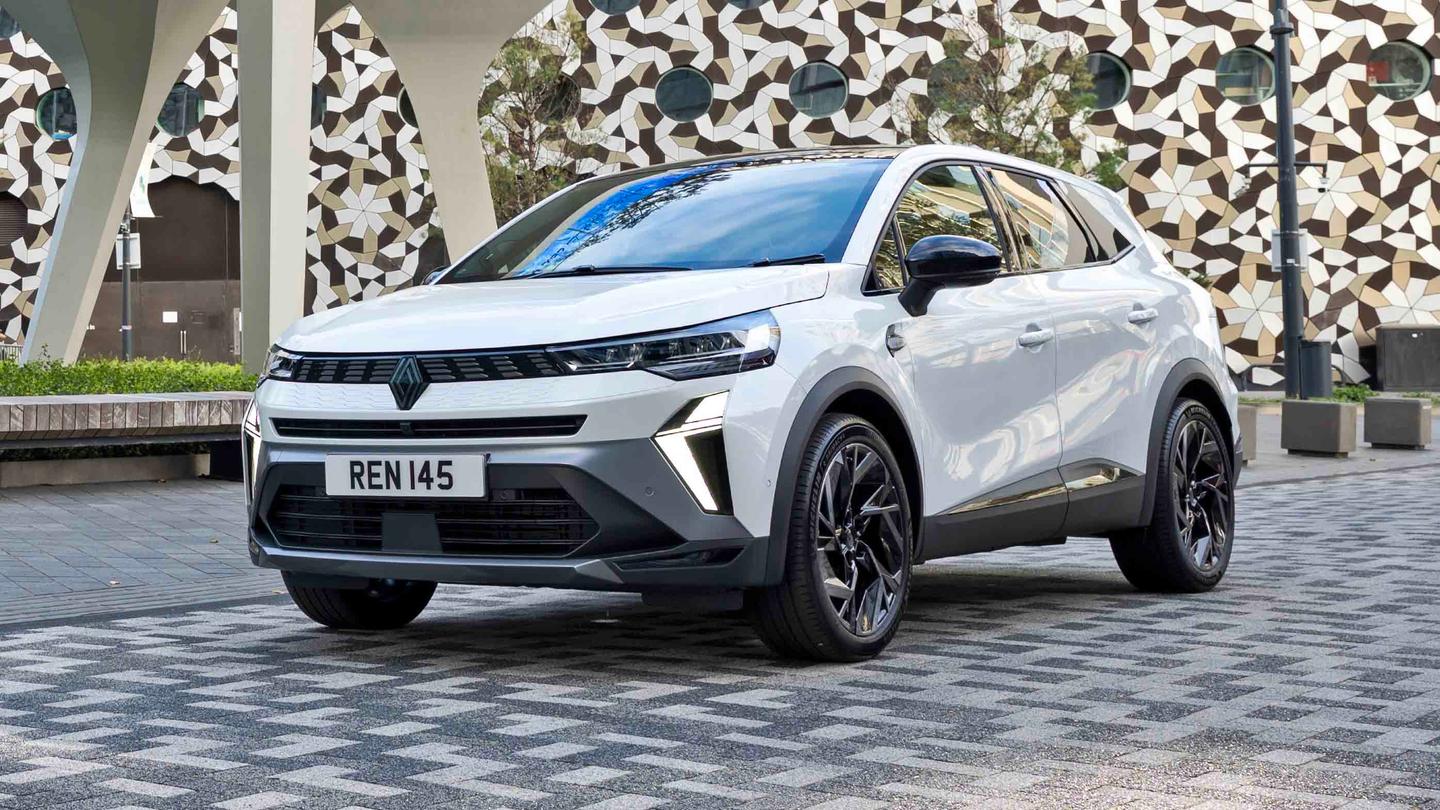
Renault is producing an excellent range of cars at the moment, but that’s not translating into market-leading sales for some reason.
The Symbioz uses a tried-and-tested formula, and offers a little bit more space than a Captur, but there’s no stand-out reason to buy one over a Kia Niro or a Nissan Qashqai.
- Great touchscreen
- Smooth hybrid engine
- Pleasant driving experience
- Surprisingly cramped rear seats
- Interior storage could be more useful
- Captur is cheaper and not much less practical
Should I buy a Renault Symbioz?
Renault’s burgeoning SUV range can be hard to keep up with. In the petrol range alone, there are four distinct models, all with slightly different styling. The Renault Symbioz sits above the Captur but below the Austral and Rafale – squeezing into the tiny space that the gawky Arkana used to occupy.
In practice, it looks and feels like a lengthened Captur, with a slightly bigger bum that features a slightly bigger boot. But it’s a bit more expensive than the Captur, and if you don’t need the extra space you’ll be better off with the smaller model.
"Despite not needing to be plugged in, the Symbioz has a quoted fuel economy figure of 60mpg"
Compared to other hybrid SUVs, the Symbioz is decent value on the used market. Smaller models such as the Nissan Juke are cheaper, while bigger models like the Hyundai Tucson and Kia Sportage are more expensive. That makes Renault’s effort an appealing choice if you’re the sort of person who likes to hedge your bets.

The Symbioz feels fairly good value inside. You get a large touchscreen and colourful digital dials as standard, with built-in Google mapping and apps, plus a good smattering of plush-feeling materials.
But while the boot is a very useful size, the rear seats aren’t quite so spacious. With someone tall in the front seat, the rear-seat occupant is going to feel a bit squashed – which is disappointing when the Qashqai is a very similar size and feels roomier.
Overall, the Symbioz is a likeable car. It drives well for a car like this and it promises good fuel economy. There’s nothing really wrong with it, so long as you’re not expecting crisp on-the-limit handling. Given it’s a crossover going to be driven by families and couples, that’s not very likely. So, yes, the Symbioz deserves a place on your shortlist – which is probably going to be more of a long list.
Interior and technology

We love getting into a car and finding Google software built in. Renault doesn’t claim to be a software expert, instead sensibly leaving it to the experts. It means the navigation system is super sharp, totally connected and always up to date. And, because it’s the same system that you probably use all the time on your phone, it’s instantly familiar and intuitive.
The Renault bits are great, though. Five shortcut tiles to the different menu areas are permanently at the top of the screen, mirrored by a climate panel that’s always at the bottom. Submenus and different apps are easily located, and you won’t ever have to take your eyes off the road for too long.

Material quality is good for the price point of the car, and Renault has carefully applied nice materials to the areas you’ll touch – saving the cheaper cuts for more out-of-the-way areas. All the different pieces feel well put together, too, putting the Symbioz perfectly between posh German models and cheaper, more basic-feeling cars.
The two ‘Esprit Alpine’ trim levels include a stylish blue metallic trim piece across the dash, and a fabric bit underneath that features a subtle French flag. Further blue accents in the stitching and on the seatbelts add additional interest, while the seat upholstery uses some recycled materials in its construction.

Techno trim starts the Symbioz lineup. With keyless entry, adaptive cruise control, LED headlights, wireless phone mirroring and charging, a rear-view camera and 18-inch alloy wheels, you absolutely can’t call it base spec.
Techno Esprit Alpine is next, and that mouthful of a name is nothing compared with its kit list. As well as everything we just mentioned, you get heated front seats with power adjustment, a heated steering wheel, an electric bootlid, a smattering of self-driving tech and extra safety bits. The wheels grow by an inch.
It’s probably not worth upgrading to the top-spec Iconic Esprit Alpine trim level, unless you’re desperate for a top-view camera, self-parking tech, a nine-speaker Harman Kardon sound system and Renault’s impressive Solarbay opacifying panoramic sunroof.
Practicality

If the Captur is too small and the Austral is too big for you, the Symbioz is Renault’s Goldilocks SUV. While that seems niche, it’s actually the perfect size for UK roads. Not too big to be a pain in the derriere when trying to parallel park in a busy high street – especially given all-round sensors and a rear camera are standard – but big enough to be seriously useful.
The boot space seems much bigger than the 434-litre figure suggests, especially with the useful underfloor storage. It’s a little narrow, though, and we wouldn’t turn down a few more hooks and a 12V socket to make the space even more versatile. Renault says the Symbioz gives you up to 624 litres of boot space with the seats pushed forward and still upright – but, given that doing so removes all the rear legroom, why wouldn’t you just fold the seats down?
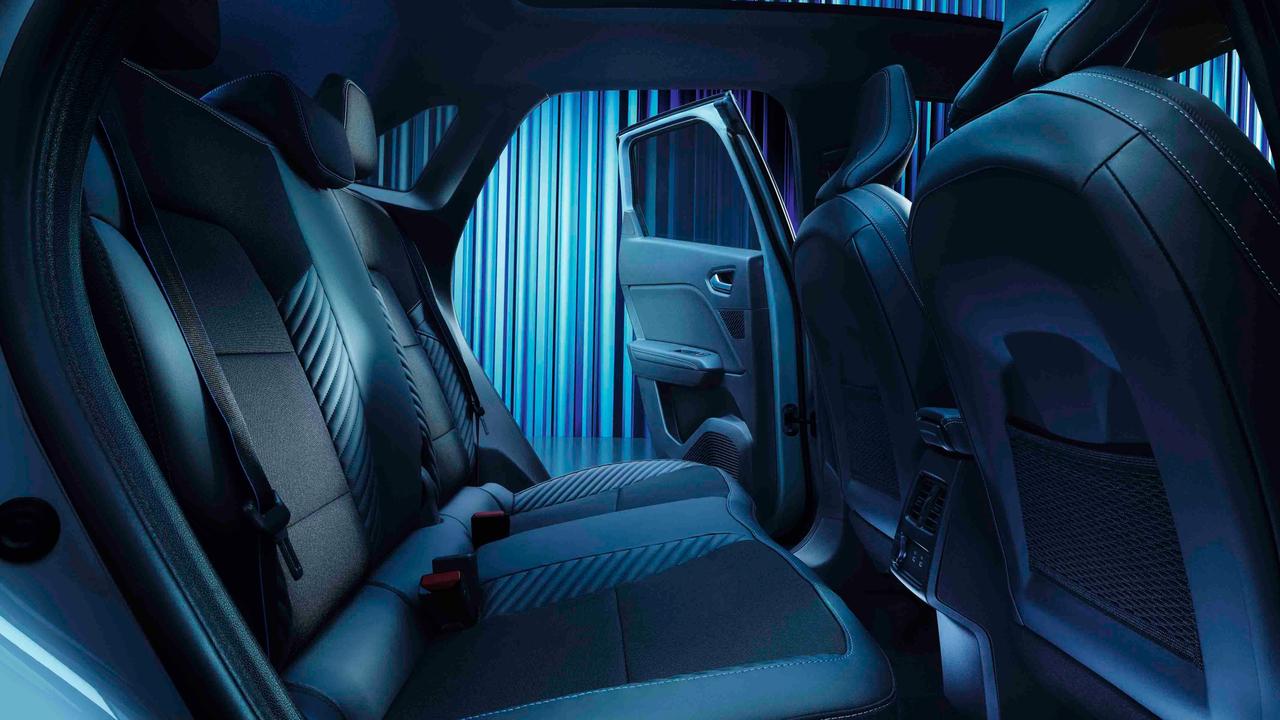
Rear legroom isn’t the Symbioz’s strongest point anyway. An average-sized driver can sit in front of another average-sized adult, but if either of them is tall they’ll feel cramped. It’ll feel especially cramped with three adults across the rear bench and, if a carful of adults is going to be a regular occurrence, you’ll be better off with the wider and longer Austral.
It’s not too difficult to put child seats in, but some cars make it easier with more readily accessible Isofix points and more legroom.
Upfront, the glovebox and central armrest storage area are small, but that’s offset by big door bins and three different storage trays on the centre console. The gearshifter takes up a lot of space on the centre console, and we were wondering why Renault didn’t put it on the steering column – like it does on the electric Megane and Scenic. But, now, the Symbioz is available with a manual gearbox, and you wouldn’t want that on the steering column, would you?
Engines and performance

Until recently, the Symbioz only came with a 145hp hybrid petrol engine borrowed from the Clio and Captur. This is what powered our test car, and it’s a superb engine.
With the electric motor assisting the petrol engine, it’s responsive when you ask for extra power. There’s no delay like in some hybrids, and it never feels like the computer is struggling to decide which power source to use.
The motor’s keenness to help out also means refinement is generally pretty good. The engine only barks when you really put your foot down, such as when joining a motorway. It’s a less jarring noise than a Toyota hybrid, and you won’t hear it very often.
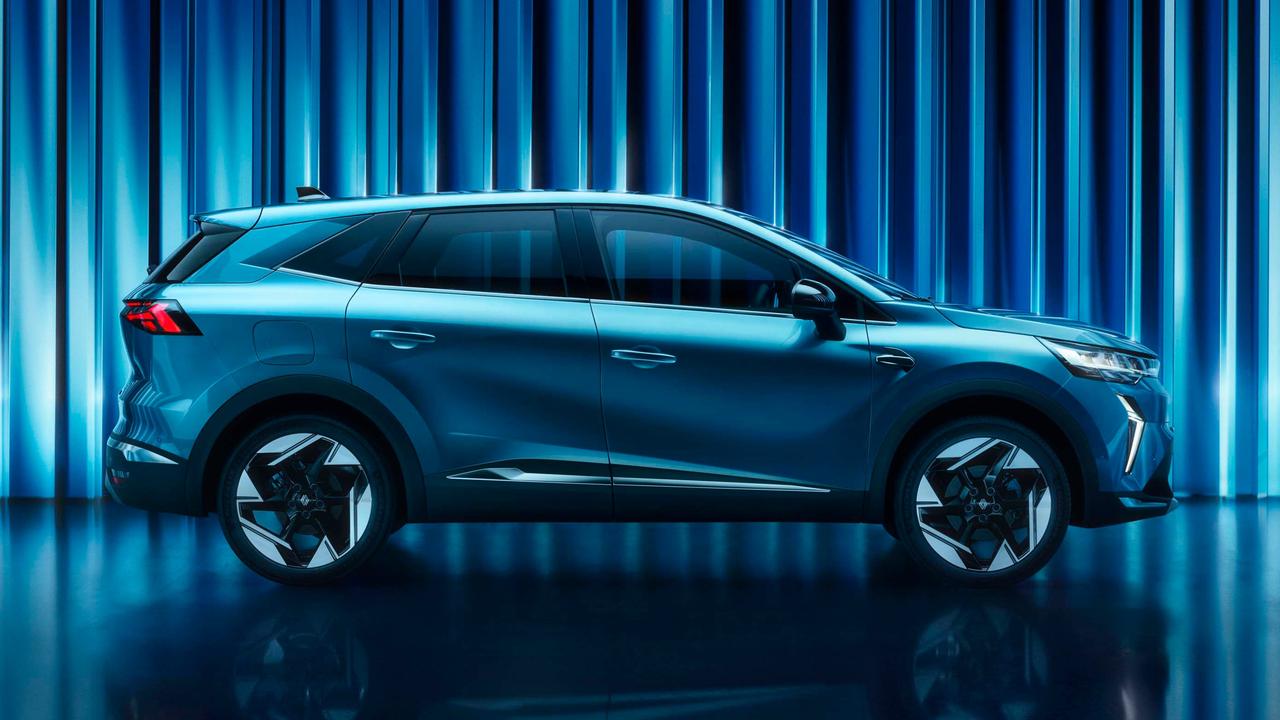
There is some wind and tyre noise at motorway speeds – arguably no worse than rivals – but the powertrain stays quiet.
And, despite not needing to be plugged in, the Symbioz has a quoted fuel economy figure of 60mpg.
We came away from the 145hp engine thinking it could do with a smidge more power, as reflected by the merely reasonable 0-62mph time of 10.6 seconds. It seems Renault thought this too, because new versions pack 160hp and hit 62mph in nine seconds. And, interestingly, get even more mpg.
A new addition to the range is a mild-hybrid 140hp petrol engine, which looks like it’s borrowed from the Nissan Qashqai. This is a cheaper option and still promises to be quite efficient, returning up to 47.9mpg. You can pick this engine on either of the two Techno trims.
Driving and comfort

If Renault aimed for a ‘fine’ driving experience with the Symbioz, it succeeded. The Symbioz doesn’t embarrass itself in any area here, but nor does it stand out as being particularly sporty or comfortable.
As mentioned, the overall refinement is good enough that it’s unlikely to get on your nerves, and the ride quality strikes a decent balance between firm and soothing.
The steering is a little quick, which would make a lower car feel agile but makes the Symbioz just a bit tippy when you attempt a sudden change of direction. In most normal driving situations, though, the Symbioz feels controlled and predictable.
Pick the hybrid and you also get a decent amount of brake regeneration, which gives you some of the feeling of driving a fully electric car. And it improves both your fuel economy and the longevity of your brake pads.































